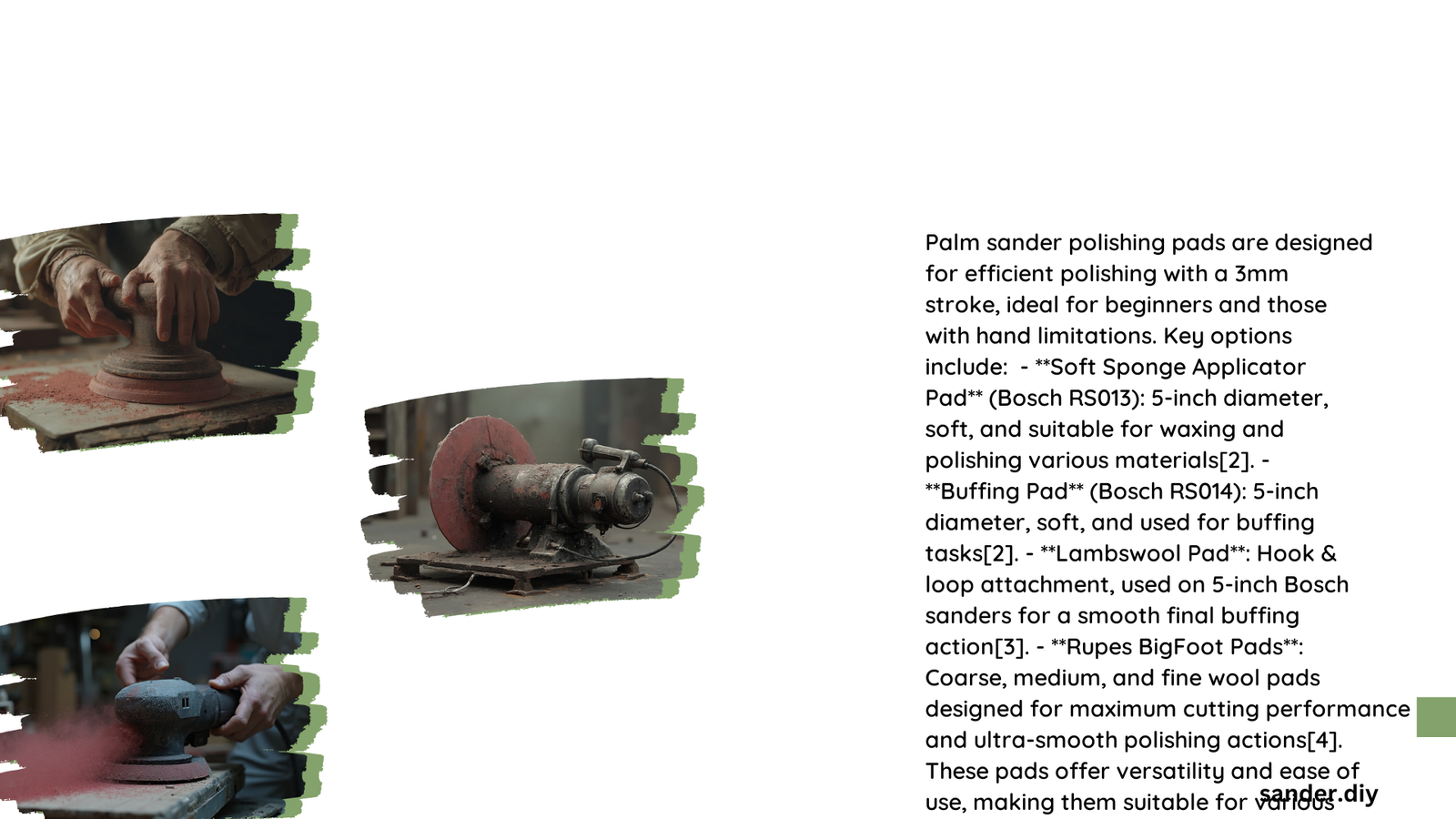Palm sander polishing pads represent critical tools for achieving smooth, professional-grade surface finishes across various materials. These specialized accessories enable woodworkers, automotive enthusiasts, and craftspeople to transform rough surfaces into pristine, glossy masterpieces through strategic material selection, precise application techniques, and understanding pad characteristics.
What Are Palm Sander Polishing Pads?
Palm sander polishing pads are specialized attachments designed to enhance surface preparation and finishing processes. These versatile tools come in multiple materials, configurations, and performance levels, enabling users to tackle diverse refinishing challenges with precision and efficiency.
What Materials Compose Palm Sander Polishing Pads?

Foam Pad Compositions
- Soft Foam: Ideal for final finishing
- Medium Foam: Balanced polishing performance
- Hard Foam: Aggressive cutting capabilities
Material Characteristics Comparison
| Pad Type | Cutting Power | Finish Quality | Recommended Use |
|---|---|---|---|
| Soft Foam | Low | Excellent | Final Polishing |
| Medium Foam | Moderate | Good | General Polishing |
| Hard Foam | High | Fair | Defect Removal |
How Do Different Pad Types Perform?
Foam Pad Performance
Foam pads represent the most versatile palm sander polishing pads, offering:
– Excellent heat dissipation
– Consistent surface contact
– Multiple hardness options
– Compatibility with various sanders
Hook and Loop Pad Advantages
- Secure attachment mechanism
- Quick pad replacement
- Suitable for wet and dry applications
What Techniques Maximize Polishing Effectiveness?
Surface Preparation Strategies
- Start with coarse foam pads for initial defect removal
- Progress to medium foam pads for intermediate smoothing
- Finish with soft foam pads for high-gloss results
Pressure and Motion Recommendations
- Apply moderate, consistent pressure
- Use circular motion techniques
- Maintain steady machine speed
- Avoid excessive heat buildup
What Challenges Do Users Encounter?
Common Polishing Pad Issues
- Premature pad wear
- Uneven surface finishing
- Swirl mark development
- Heat-related material degradation
Mitigation Techniques
- Regular pad cleaning
- Proper pressure control
- Appropriate pad selection
- Periodic pad replacement
Expert Tips for Optimal Performance
Professional Recommendations
- Match pad hardness to specific project requirements
- Use compatible polishing compounds
- Maintain consistent machine speed
- Clean pads between applications
- Store pads in cool, dry environments
Maintenance and Care
Pad Longevity Strategies
- Clean after each use
- Inspect for wear and damage
- Rotate pads to ensure even usage
- Replace when performance degrades
Conclusion
Palm sander polishing pads represent sophisticated tools requiring strategic selection and application. By understanding material compositions, performance characteristics, and proper techniques, users can achieve exceptional surface finishing results across multiple projects.
